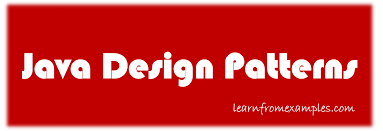Crafting a Comprehensive White Paper: Java Design Patterns
Introduction
Design patterns are reusable solutions to common software design problems. They provide a vocabulary and structure for developers to communicate and implement effective design solutions. Java, as a versatile and widely-used programming language, offers a rich ecosystem for applying design patterns. This white paper delves into the core design patterns, their applications in Java, and practical examples.
Core Design Patterns
- Creational Patterns:
- Singleton: Ensures a class has only one instance and provides a global point of access to it.
- Factory:
- Abstract Factory: Creates families of related objects.
- Builder: Separates object construction from its representation.
- Prototype: CreatesAdapter:** Converts the interface of a class into another interface clients expect.
- Bridge: Decouples an abstraction from its implementation.
- Composite: Treats individual objects and compositions of objects uniformly.
- Decorator: Attaches additional responsibilities to objects dynamically.
- Facade: Provides a simplified interface to a complex subsystem.
- Flyweight: Reduces the number of objects by sharing common parts of multiple objects.
- Proxy: Provides a surrogate or placeholder for another object to control access to it.
Chain of Responsibility:** Passes a request along a chain of receivers until one handles it.
- Command: Encapsulates a request as an object, letting you parameterize clients with different requests.
- Interpreter: Defines a grammar for a language and interprets sentences in the language.
- Iterator: Provides a way to access the elements of an aggregate object sequentially without exposing its underlying
- Mediator: Defines an object that encapsulates how a set of objects interact.
- Memento: Captures and restores an object's internal state.
- Observer: Defines a one-to-many dependency between objects so that when one object changes state, all its dependents are notified and updated automatically.
- State: Allows an object to alter its behavior when its internal state changes.
- Strategy: Encapsulates algorithms inside objects, making them interchangeable.
- Template Method: Defines the skeleton of an algorithm in an operation, deferring some steps to subclasses.
- Visitor: Represents an operation to be performed on the elements of an object structure.
Java Examples
- Singleton: Creating a logger instance to be used globally.
- Factory: Creating different types of documents (PDF, Word) based on a configuration.
- Decorator: Adding encryption or compression to a file stream.
- Observer: Implementing a notification system where multiple listeners are notified when a specific event occurs.
- Strategy: Sorting algorithms like quicksort, mergesort, and bubble sort.
Best Practices
- Understand the Problem: Identify the core design problem and choose a pattern that aligns with the solution.
- Keep It Simple: Avoid overengineering and unnecessary complexity.
- Balance Abstraction and Implementation: Strike a balance between high-level design and concrete implementation.
- Test Thoroughly: Write unit tests to verify the correctness of the design pattern implementation.
- Refactor Regularly: Continuously improve the design by refactoring and removing unnecessary complexity.
References
- Head First Design Patterns: A highly readable and practical introduction to design patterns.
- Design Patterns: Elements of Reusable Object-Oriented Software: The classic book on design patterns by the Gang of Four.
- Effective Java: Covers various Java programming techniques, including design patterns.
- Java Documentation: Official Java documentation provides detailed explanations and examples of design patterns.
Conclusion
Design patterns are essential tools in the software engineer's toolbox. By understanding and applying these patterns, developers can create more robust, flexible, and maintainable Java applications. By following the best practices outlined in this white paper, developers can effectively leverage design patterns to solve complex design challenges.
Would you like to delve deeper into a specific design pattern or explore advanced usage scenarios? Contact ias-reserch.com for details.



